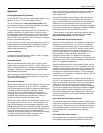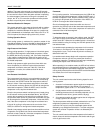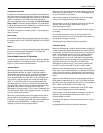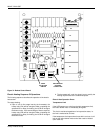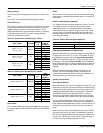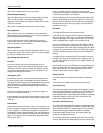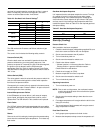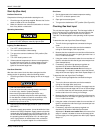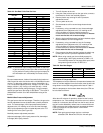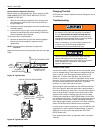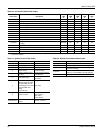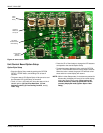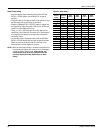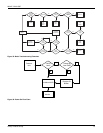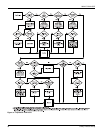
292447-YIM-A-0507
Unitary Products Group 51
Start-Up (Gas Heat)
Pre-Start Check List
Complete the following checks before starting the unit.
1. Check the type of gas being supplied. Be sure that it is the
same as listed on the unit nameplate.
2. Make sure that the vent outlet and combustion air inlet are
free of any debris or obstruction.
Operating Instructions
Lighting The Main Burners
1. Turn “OFF” electric power to unit.
2. Turn room thermostat to lowest setting.
3. Turn gas valve counter-clockwise to “ON” position (See
Figure 33).
4. Turn “ON” electric power to unit.
5. If thermostat set temperature is above room temperature,
the main burners will ignite. If a second stage of heat is
called for, the main burners for second stage heat will
ignite for the second stage heat.
Post Start Checklist
After the entire control circuit has been energized and the
heating section is operating, make the following checks:
1. Check for gas leaks in the unit piping as well as the supply
piping.
2. Check for correct manifold gas pressures. (See CHECKING
GAS INPUT.)
3. Check the supply gas pressure. It must be within the limits
shown on the rating nameplate. Supply pressure should be
checked with all gas appliances in the building at full fire. At
no time should the standby gas pressure exceed 10.5 in. or
the operating pressure drop below 4.5 in for natural gas
units. If gas pressure is outside these limits, contact the
local gas utility or propane supplier for corrective action.
Shut Down
1. Set the thermostat to the lowest temperature setting.
2. Turn “OFF” all electric power to unit.
3. Open gas heat access panel.
4. Turn gas valve clockwise to “OFF” position (See Figure 33).
Checking Gas Heat Input
This unit has two stages of gas heat. The first stage is 60% of
the full fire input and is considered the minimum input for the
furnace. The intended input for each furnace is shown in
Table 28. The table applies to units operating on 60 Hz power
only.
To determine the rate of gas flow (Second Stage).
1. Turn off all other gas appliances connected to the gas
meter.
2. Turn on the furnace and make sure the thermostat is
calling for Second stage (100% input) heat.
3. Measure the time needed for one revolution of the hand on
the smallest dial on the meter. A typical gas meter has a 1/
2 or a 1 cubic foot test dial.
4. Using the number of seconds it takes for one revolution of
the dial, calculate the cubic feet of gas consumed per hour.
(See example below).
5. If necessary, adjust the high pressure regulator as
discussed in the section “Manifold Gas Pressure
Adjustment”. Be sure not to over-fire the furnace on
Second stage. If in doubt, it is better to leave the Second
stage of the furnace slightly under-fired. Repeat Steps 1-5.
To determine the rate of gas flow (First Stage)
1. Turn off all other gas appliances connected to the gas
meter.
2. Turn on the furnace and make sure the thermostat is
calling for first stage (60% input) heat.
3. Even when the thermostat is calling for first stage heat, the
unit will light on second stage and will run on Second stage
for 1 minute. Allow this one-minute time period to expire
and be certain the unit is running on first stage.
4. Measure the time needed for one revolution of the hand on
the smallest dial on the meter. A typical gas meter has a 1/
2 or a 1 cubic foot test dial.
5. Using the number of seconds it takes for one revolution of
the dial, calculate the cubic feet of gas consumed per hour
(See example below).
6. If necessary, adjust the low pressure regulator as
discussed in the section “Manifold Gas Pressure
Adjustment”. Be sure not to under-fire the furnace on first
stage. If in doubt, it is better to leave the first stage of the
furnace slightly over-fired (greater than 60% input). Repeat
Steps 1-6.
This furnace is equipped with an automatic re-ignition
system. DO NOT attempt to manually light the pilot.
FIRE OR EXPLOSION HAZARD
Failure to follow the safety warning exactly could result
in serious injury, death or property damage.
Never test for gas leaks with an open flame. use a
commercially available soap solution made specifically
for the detection of leaks to check all connections. A fire
or explosion may result causing property damage,
personal injury or loss of life.




